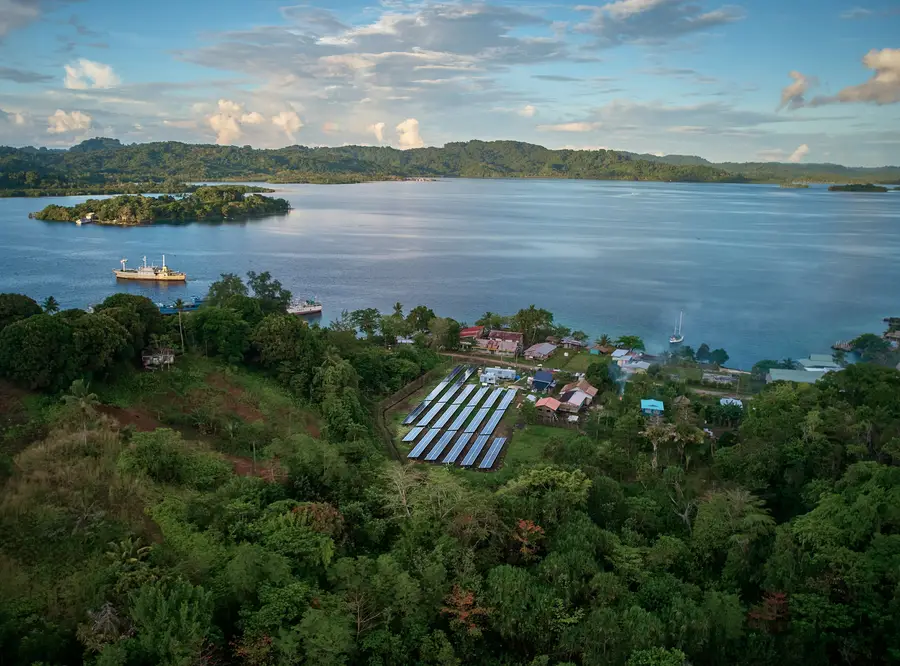
Despite decades of climate warnings, climate finance has consistently fallen short of what’s needed for effective climate mitigation and adaptation. This gap is widening, even as extreme weather events become more frequent and severe.
An estimated $6 trillion is now needed to implement climate action plans in low-income countries alone by 2030 — a figure that does not fully account for the adaptation measures required in these areas. The pace of finance must also accelerate. Analyses suggest climate finance must quickly increase by at least five-fold annually. If we fail to make sufficient investments in mitigation now, the cost of adaptation will continue to grow as the need expands and escalates.
COP29: A Pivotal Moment for Climate Finance
The upcoming Conference of the Parties to the United Nations Framework Convention on Climate Change (COP29), set for Nov. 11-22 in Azerbaijan, is poised to highlight the urgency of expanding climate finance to avoid the worst impacts of climate change. COP29 President-Designate H.E. Mukhtar Babayev has already called upon “all stakeholders to raise their levels of commitment” and laid out various initiatives to scale up climate finance while “greening” trade. They include:
- A climate finance action fund capitalized by the countries and companies that produce fossil fuels.
- A platform promoting investment into green diversification.
- Green energy economic zones.
COP29 is expected to focus on a New Collective Quantified Goal (NCQG) for climate finance. The goal, developed in response to the outcomes of the Global Stocktake, aims to replace the previous target of $100 billion annually for high-income countries to contribute to low-income countries. Negotiations to date have progressed slowly, with thorny issues still to be debated at COP29.
Key debates include determining the overall annual target for funding and whether contributions should be strictly limited to grants and/or concessional funding or if all private finance mobilized should count toward the goal. Regardless of whether the new goal is broader or narrower in scope, it must lead to mobilizing more climate finance rather than reclassifying financing that is already occurring.
Finance Gaps Leave Climate-Vulnerable Countries Waiting
While numerous funds have been established to channel climate finance to low-income countries, the supply from donor countries is falling short of the increasingly urgent demand. Four of these funds alone are seeking a combined $50 billion in replenishments over the next six months, resulting in what the Center for Global Development calls “a replenishment traffic jam,” leaving many funds under-financed.
For instance, the Loss and Damage Fund (LDF) was established at COP27 to provide grants and concessional financing to low-income countries disproportionately affected by climate change. The LDF requires an estimated $100 billion by 2030 to fulfill its mission, but as of July 2024, high-income countries—primarily France, Germany, Italy, and United Arab Emirates—had only contributed $679.7 million.
Though the U.S. has contributed just $17.5 million to the LDF — a modest amount relative to its greenhouse gas emissions — it has made other significant commitments, pledging $50 million to the Adaptation Fund and $6 billion to the Green Climate Fund (GCF), a major source of adaption funding for low-income countries. Additionally, the U.S. is investing hundreds of billions of dollars in domestic climate initiatives, and USAID recently made an additional $114 million global commitment to support gender equality and climate resilience in agrifood and water systems.
Nevertheless, meeting the need for climate finance remains a significant challenge. Intended recipients also express frustration over the barriers to accessing funds. Additionally, debates are ongoing over where funds should be allocated—whether for mitigation or adaptation.
Aside from specialized funds like the LDF and GCF, the multilateral development bank (MDB) system is designed to fund infrastructure, energy, education, and environmental sustainability in low-income countries and should serve as a primary resource for climate finance. However, MDBs often act more like market rate lenders instead of taking on additional risks to bridge a gap for the private sector. The Bridgetown Initiative, which calls for increasing the amount of money available and allowing more flexibility in how it is spent, was unveiled at COP27 to encourage this risk-taking. While it is gaining momentum, it has not been fully implemented. However, COP29 may advance calls for international financial institutions to act as catalysts for substantial private sector funding.
Innovative Climate Finance Mechanisms Offer Environmental and Economic Benefits
Blending public and private funds can be an innovative strategy and powerful tool in the fight against climate change. This approach can result in co-benefits for the environment, such as enhancing biodiversity, with local communities often realizing economic gains, as well.
Debt-for-nature swaps can support low-income countries, which tend to have large debts at high interest rates, especially island nations that have borrowed money to rebuild their economies after extreme storms. Their loans can be renegotiated or guaranteed by a third party, with the savings realized from a lower interest rate invested into environmental and habitat protection projects that include a climate element. Though previously limited to the public sector, these swaps are starting to attract more private investment.
The private sector also has begun advancing nature-based climate solutions, including investments in the blue economy, which often lack the steady revenue streams characteristic of standard business models. For example, ocean advocates are forging collaborations with industries like seaside hotels and fishing fleets that can benefit economically from coastal and coral reef protection.
Additionally, carbon credits can be sold based on the restoration of mangrove forests, creating an investible business from environmental protection. In these nontraditional revenue models, crediting mechanisms like Article 6 of the Paris Agreement become increasingly important by creating carbon markets that attract investors. However, improvements are needed in Article 6 and voluntary carbon markets to ensure that carbon projects deliver the promised environmental and social benefits.
Capitalizing on New Opportunities
While regulation needed to drive large-scale climate action by the private sector is slow to materialize globally, some private sector actors are beginning to ramp up investments in mitigation and resilience on their own. Historically, such efforts were the domain of the public sector, but as the need for these solutions becomes clearer, early adopters and private investors are capitalizing on new opportunities to present profitable solutions. Companies are investing in technologies like weather modeling to understand their own climate vulnerability and in new building designs to increase adaptability to extreme weather events. These innovations can save money by boosting resilience to climate shocks.
With the largest capital reserves, the private sector will inevitably play a central role in climate financing. However, the public sector remains critical in shaping the enabling environment for private investment through incentives, penalties, and supportive policies that help de-risk and drive action on climate mitigation and adaptation.
Amidst these global efforts, RTI is supporting countries on the frontlines of climate impacts in Latin America, the Caribbean, Africa, and Asia to access climate finance from multilaterals and is demonstrating opportunities for investment. These include designing blended finance structures to de-risk and mobilize private sector investment; developing economic tools like RTI WaterFALL(R), HydroBID, and EcoShift to make the business, financial, and economic cases for investment in climate action; and providing project preparation assistance to design bankable projects and support access to finance and investor matchmaking.
Looking Ahead to COP29
It is clear we must enlist all types of financing and bring together diverse partners to raise the trillions of dollars required to combat the climate crisis. As the consequences of inaction become increasingly apparent, I am optimistic that COP29 will focus on meaningful reforms and concrete proposals that expand our financial commitments to fighting climate change and direct significant new funding to where it is most needed.
Learn more about RTI’s Center for Climate Solutions
Learn more about RTI’s work in climate finance

Learn More About the Author
Read more about Tom Bishop's career in climate finance, including his global work to establish green banks.

